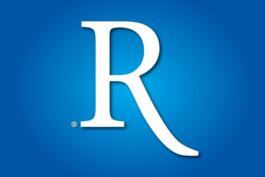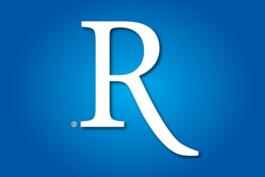Gridlock Leading to Debt Crisis?
A Commentary by Lawrence Kudlow
The New York Times ran a front-page story yesterday called “Party Gridlock in Washington Feeds New Fear of a Debt Crisis.” I would’ve preferred a different title. In the aftermath of Scott Brown’s Senate win in Massachusetts, the new political gridlock in Washington could spell the end of the liberal crack-up that we have witnessed over the past year.
As yet another subheading to this theme, it is vital that the extravagant spending and borrowing in Washington not be an excuse for broad-based tax increases, which would sink the economy even further and jack up unemployment.
Take, for example, Obama’s new deficit commission. Its co-chairs are former Clinton staff chief Erskine Bowles and former Republican senator Alan Simpson.
Mr. Bowles actually helped put together a very good 1997 deal with the Gingrich Congress that cut the capital-gains tax and placed firm limits on federal spending. Economic growth surged and the budget moved into surplus. Alan Simpson, while a wonderful and very humorous man, has a long history of being a tax hiker -- exactly what we don’t need today.
Here’s the deal: The Obama budget indicates that the ratio of publicly held federal debt as a share of GDP will rise to at least 80 percent over the next decade. (Remember, it was 40 percent only a few years ago.) It’s growing because of massive over-spending, including another $100 billion in the 2011 budget on top of roughly $1.3 trillion in new spending last year, all of which comes on top of the over-spending in the 2007-08 period under President Bush and a Democratic Congress.
What’s more, GDP growth is recovering only slightly after a terrible recession.
So I believe we need a combination of pro-growth economic policies and firm federal-spending limits to solve the debt problem. Of course, it should go without saying, no new tax hikes.
How about a flat tax that would end all the unnecessary flotsam-and-jetsam tax credits and subsidies to broaden the tax base? Why not slash the top tax rate to 20 percent or less for a true flat tax?
Stop the multiple taxes on all forms of saving and investing, including capital gains, dividends, and inheritances. Eliminate the business tax on profits in favor of a sales tax on net revenues which would deduct all investment expenses. That would leave us with a single-rate consumption-based income tax that would grow this economy by 7 to 8 percent in the years ahead, just as the economy should grow after a deep recession.
Going back to debt-to-GDP, I want to grow the denominator and reduce the demand for the numerator. That means a combination of supply-side tax cuts and firm spending limits. It might even mean rolling back the non-defense, non-entitlement spending baseline all the way to 2008.
Add to that some monetary reform for a stable King Dollar linked to gold, or a commodity basket, along with an expansion of free trade, which itself is a tax cut.
In other words, I’m proposing a growth solution to the debt problem. Lower spending is pro-growth. So are lower tax rates. A program like this could get the yearly budget deficits down to a manageable 2 to 3 percent in a couple of years. And getting the debt ratio back down to something like 50 percent also would be quite manageable.
Incidentally, limited spending and lower debt would take the pressure off the Federal Reserve to inflate the money supply, sink the dollar, and raise the inflation rate to 4 or 5 percent or worse.
So to conclude, let’s have some gridlock in Washington, which will stop the assault of big government until the end of the year when Congress is overturned by independents, tea partiers, Republicans, and probably some Democrats as well.
There is a revolution going on in the heartland against Washington’s profligacy and controls. There is still a way out. It’s called free-market populism.
See More Commentary by Lawrence Kudlow
See Other Political Commentary
Views expressed in this column are those of the author, not those of Rasmussen Reports.
Rasmussen Reports is a media company specializing in the collection, publication and distribution of public opinion information.
We conduct public opinion polls on a variety of topics to inform our audience on events in the news and other topics of interest. To ensure editorial control and independence, we pay for the polls ourselves and generate revenue through the sale of subscriptions, sponsorships, and advertising. Nightly polling on politics, business and lifestyle topics provides the content to update the Rasmussen Reports web site many times each day. If it's in the news, it's in our polls. Additionally, the data drives a daily update newsletter and various media outlets across the country.
Some information, including the Rasmussen Reports daily Presidential Tracking Poll and commentaries are available for free to the general public. Subscriptions are available for $4.95 a month or 34.95 a year that provide subscribers with exclusive access to more than 20 stories per week on upcoming elections, consumer confidence, and issues that affect us all. For those who are really into the numbers, Platinum Members can review demographic crosstabs and a full history of our data.
To learn more about our methodology, click here.


